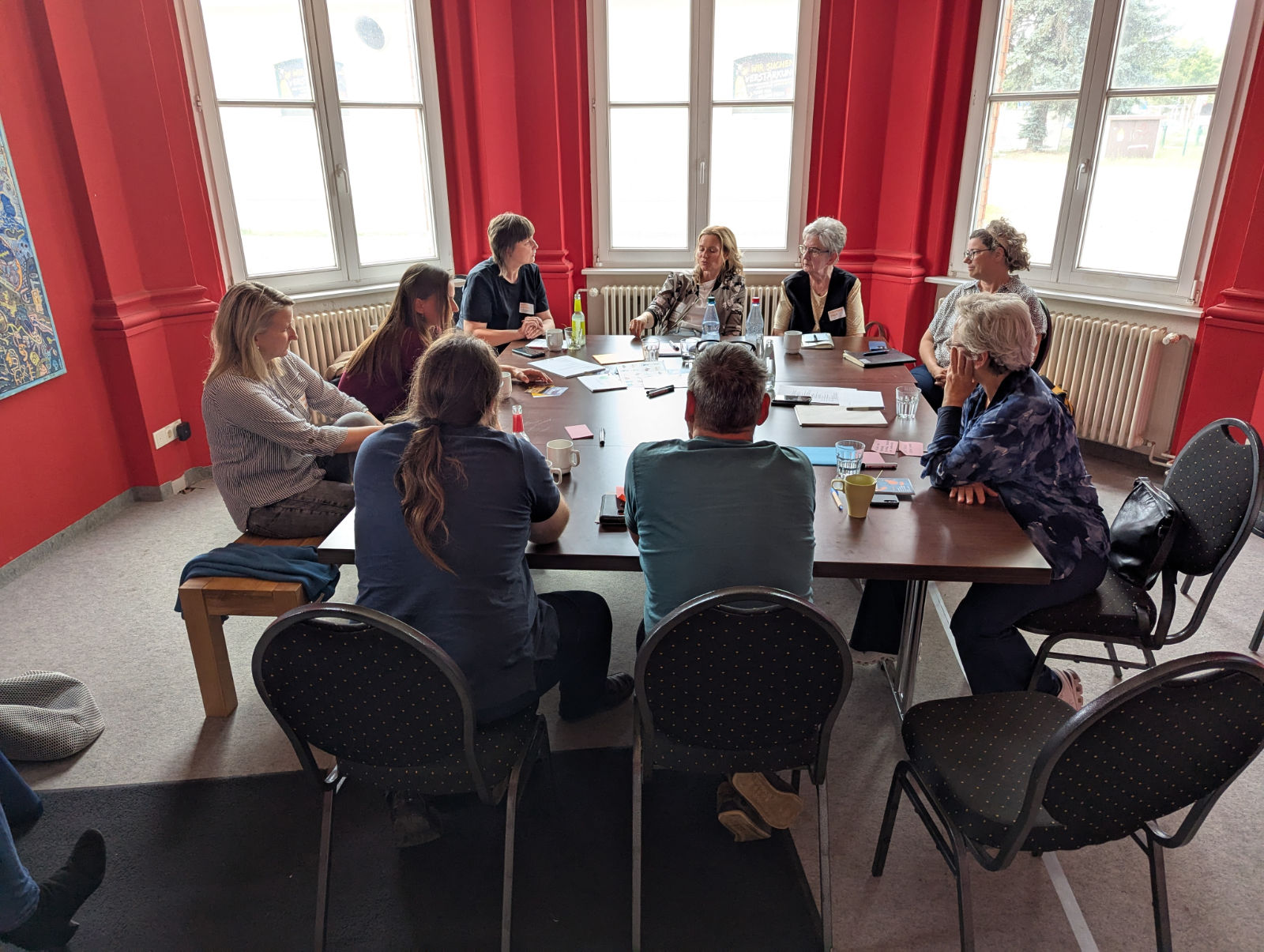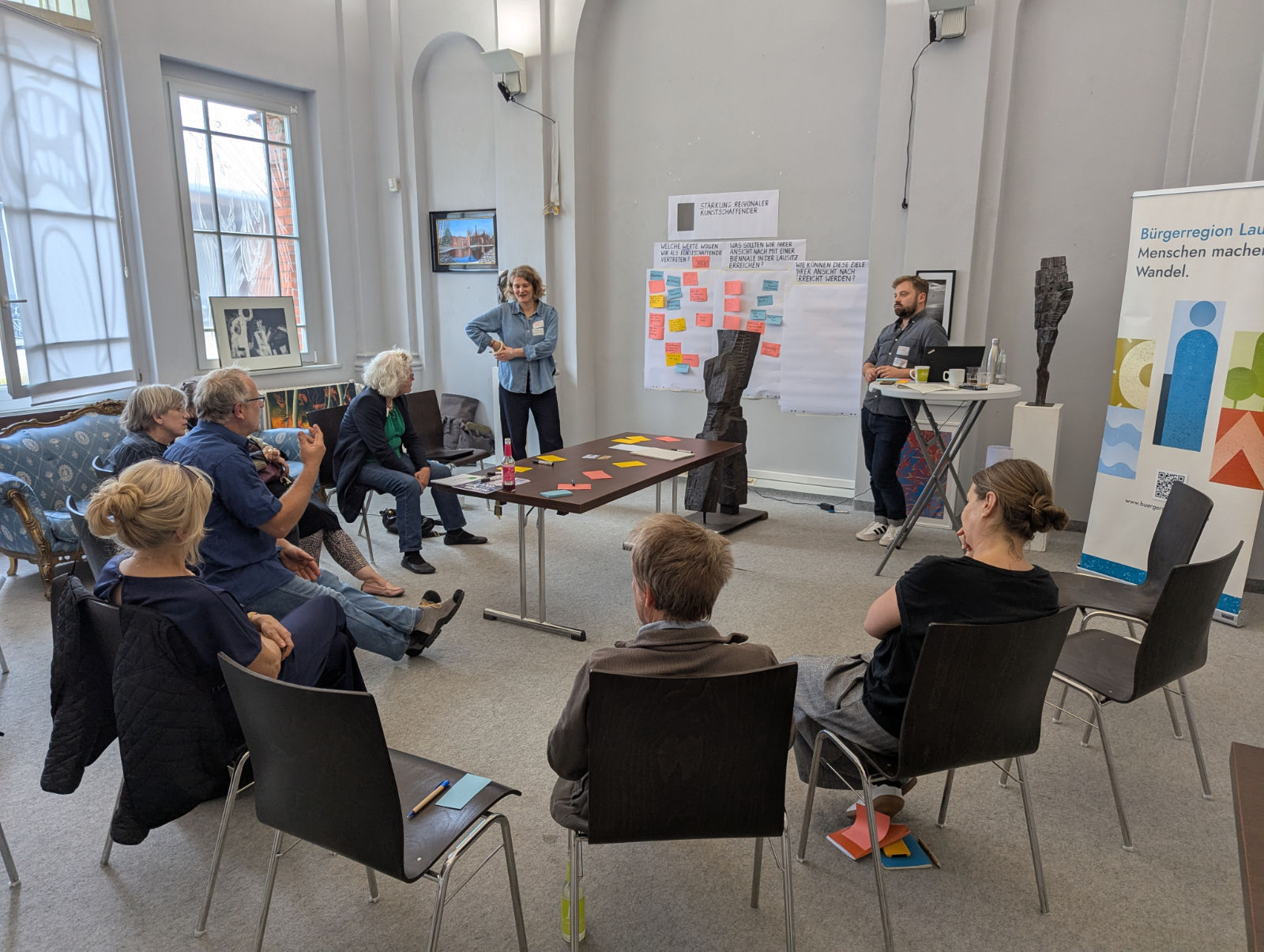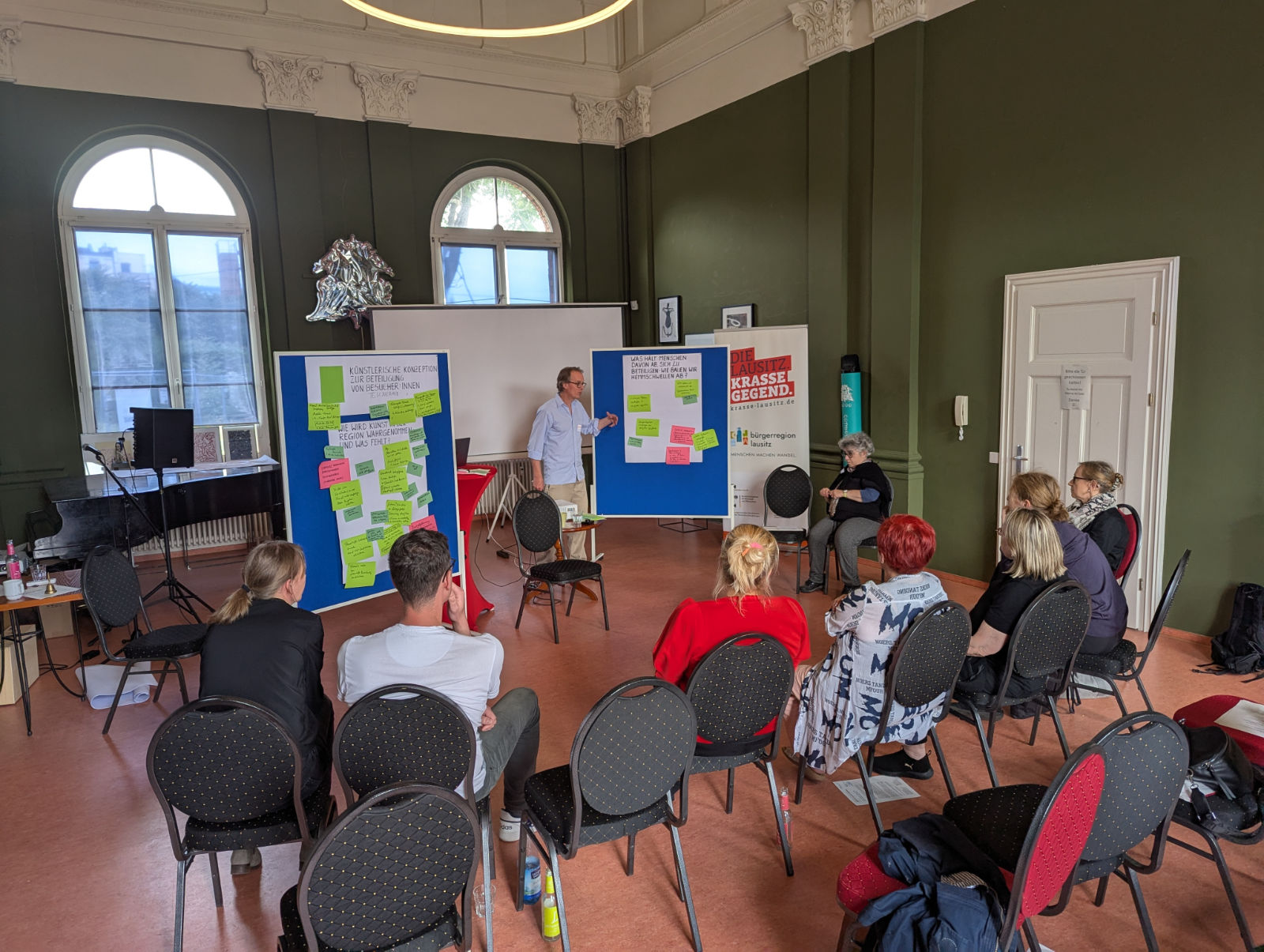


Video: Jan Henselder
Where in Lusatia would you suggest hosting an (art) biennial?
What is your favorite place in Lusatia right now?
Which project spaces are currently available in Lusatia?
Are there any empty spaces you know could be used for art?
What features make a space suitable for art, and what requirements do these spacesneed?
Video: Jan Henselder
Art in Lusatia is, for me, ...
What principles or values should our art aim to express?
What do you think an (art) biennial is supposed to be?
What do we aim to accomplish with a biennial in Lusatia?
How do you believe these goals can be achieved?
Video: Jan Henselder
What is the perception of art in the region, and what elements are missing?
What should we achieve with a biennial in Lusatia?
How can we tailor our approach to effectively connect with different target groups,such as young people, neighbors, and the elderly?
What are the obstacles to participation, and how can we remove these barriers?
How would you participate?
Video: Jan Henselder
Kunsthalle Lausitz, Cottbus
open discussion
Impulses and project development for the openart Lausitz Biennale
In 2022, representatives of cultural projects from Brandenburg Lusatia came together for an open exchange at the Lusatia Open Table event. It became clear that many buildings in the area are vacant—often called "lost places"—but young artists are increasingly using them for artistic projects.
This discussion inspired the motto "Art shapes spaces!", emphasizing how art influences interior design and the ability to make spaces feel fresh and meaningful. As for the content, this motto will be part of the 1st Openart Lausitz Biennale 2026.
On June 6, 2025, Atelierhof Werenzhain e.V., in partnership with ‘Menschen machen Kultur’ (People Make Culture), the cultural program of the Lausitz citizen region, hosted guests at the Kunsthalle Lausitz in Cottbus. The goal is to promote shared exchange among Lusatian artists, art, culture, and municipal representatives to develop formats for active participation within the framework of the 1st Openart Lausitz Biennale. The objective is to strengthen community action, especially in rural areas.
To begin, Artistic Director Michaela van den Driesch explained the concept and background of the Biennale. In later salon discussions, participants discussed the following topics:
Cultural spaces and infrastructure
Which regional project spaces align with the motto ‘Art shapes spaces!’?
Which vacant spaces, such as abandoned locations, can also be repurposed for artistic uses?
Artistic concept for visitor engagement
What types of participation formats have been developed and are available for implementation or introduction?
How can residents be specifically engaged and actively involved?
Strengthening regional artists
What are our goals, and what values do we want to convey?
How can the public view of art and culture in Lusatia be enhanced?
The discussion results were then shared and summarized below:
Cultural spaces and infrastructure.
The event highlighted many cultural spaces but often lacked active users—vacant properties have potential, especially when cities support temporary creative uses. Good accessibility—such as new bus routes in rural areas—and open, welcoming entry are essential. Networking and increasing visibility of cultural offerings are key priorities. Shared calendars, digital tools for space management, and event formats like culture-related bus tours can help remove barriers. Organizational issues, including responsibilities and rights of use, need clear rules and designated contacts. A code of conduct builds trust and reliability. Cultural education and managerial skills also need strengthening. Limited resources remain a challenge. Shared infrastructure, expertise, and pilot projects can provide practical solutions. Bold ideas like revitalizing abandoned spaces require courage, openness, and a willingness to embrace change. The goal is to establish sustainable structures, volunteer efforts, long-term collaborations, recurring formats, and ongoing use of created spaces to ensure lasting impact beyond the biennial event. Open meeting spaces—where global and regional issues are discussed and active participation encouraged—create enduring relevance and resonance.
Artistic Concept for Visitor Engagement
Art is often seen as elitist in this region. To shift this image, it’s essential to lower barriers and make art accessible to everyone. Art should be inclusive, diverse, connected to local culture, and meaningful in everyday life. Including local stories and experiences in artistic projects is key. Regional influencers, simple language, and creative communication are essential for effective marketing. Working with schools, artists, families, and local stakeholders helps create stronger connections and outreach. People participate more when they feel welcomed, safe, and understood. This can be done through regular activities, clear conflict resolution methods, and inclusive spaces. Hosting events in familiar local settings and using regional networks makes participation easier. A shared set of values encourages respectful and equal interactions. Achieving this requires a willingness to engage in dialogue, mutual respect and trust, openness, and empathy for personal stories.
Supporting regional artists is grounded in core values like mutual respect, creative freedom, solidarity, and tolerance.
A broad understanding of art, shared through cultural education, promotes personal growth and social progress. Art highlights regional identities and celebrates Lusatia's cultural diversity. At the same time, it is important to raise the profile of local artists on a larger platform. Additionally, it is crucial to clearly communicate the different roles of art—such as inspiring, conveying values, creating joy, and encouraging reflection—since these benefits extend beyond aesthetics to influence perspectives and help shape social change.